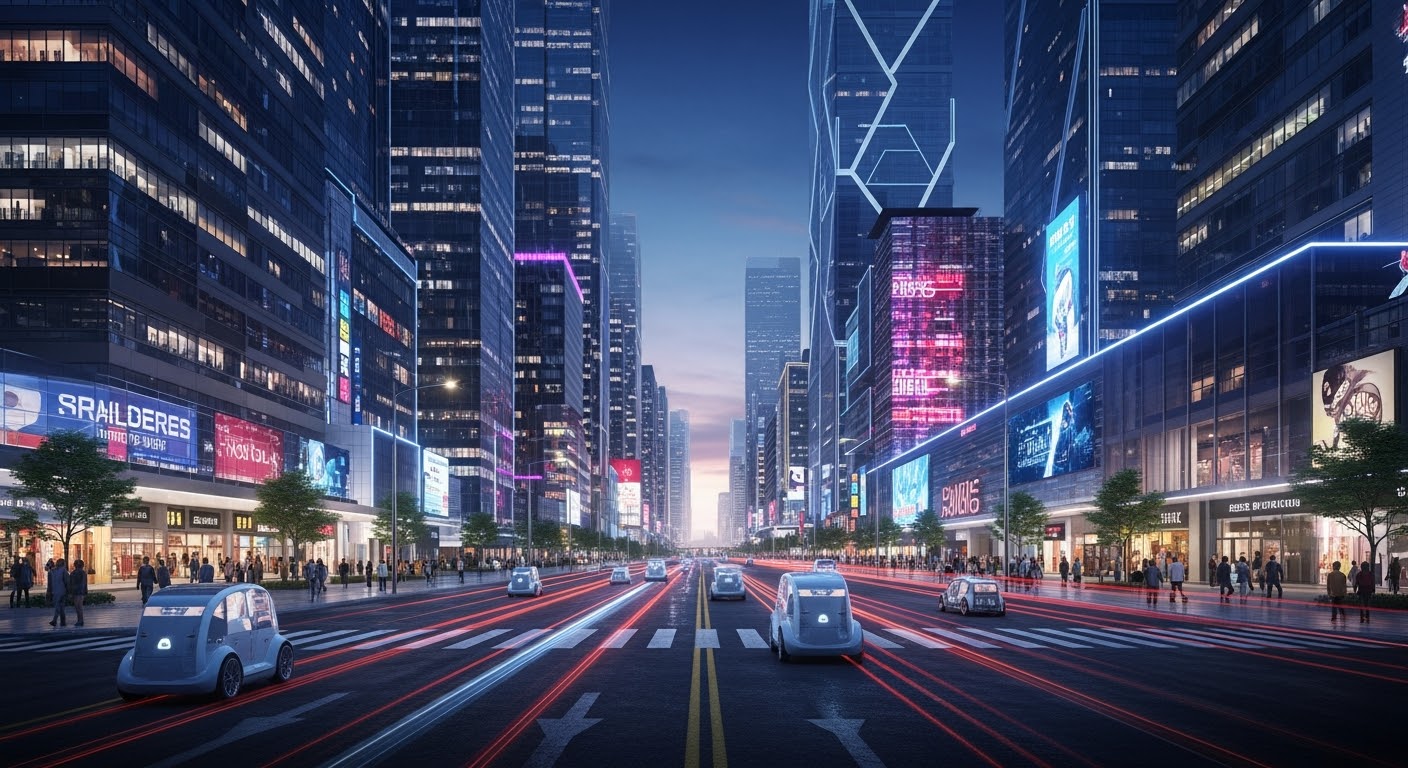Step into 2035. Your city feels different—smarter. That’s because the static billboards and uninformative signs you once knew have transformed into intelligent, interactive displays. Real-time traffic updates, personalized recommendations, and crucial public safety alerts now flow seamlessly across the urban landscape.
Welcome to the Connected Urban Canvas.

Beyond Billboards: Cities That Talk Back
Imagine your city speaking directly to you—not just through apps on your phone, but from the very streets you walk on. Digital screens are evolving into the nervous system of smart cities, providing citizens and visitors with live, localized, and interactive information.
From guiding commuters through public transport delays to broadcasting emergency alerts, these displays extend far beyond advertising. They are becoming essential urban infrastructure, weaving communication into the fabric of daily life.

The Smart City Backbone
Interactive displays are already reshaping how we move, interact, and respond in urban spaces:
- Navigation & Transport: Real-time maps and schedules reduce confusion in busy transit hubs.
- Dynamic Alerts: Weather updates, air quality reports, and safety warnings are delivered instantly to citizens.
- Personalized Information: Using aggregated, anonymous data, displays can tailor content to different districts or time-sensitive needs.
In short, they’re turning cities into living, breathing information ecosystems.
Revolutionizing Daily Life
Picture intelligent bus stops where digital panels not only show arrival times but also suggest nearby services. Imagine augmented reality overlays on city signage guiding tourists through historic districts—or community boards where citizens can instantly share feedback on local projects.
Digital signage isn’t just a tool for communication—it’s shaping integrated, citizen-centric experiences.

The Data-Driven Metropolis: Challenges Ahead
But with great connectivity comes great responsibility.
- Privacy: Safeguarding citizens’ data when displays aggregate and process information is critical.
- Infrastructure: Cities need robust 5G networks, cloud systems, and IoT integration to support these vast, interconnected displays.
- Sustainability: As cities invest in digital networks, the push for eco-friendly hardware and energy-efficient operation is stronger than ever.
Economic incentives are also driving adoption, with governments and private sectors recognizing the dual potential for public service and commercial revenue.
Your City’s Future: A Living Interface

The vision ahead is bold: a city where every surface can adapt to shifting needs—where digital signage becomes a platform for urban innovation and community engagement.
By 2035, smart cities could evolve into living interfaces, responsive to both citizens and their environment. It’s no longer just about displaying information—it’s about building connected, participatory, and resilient cities.
The conversation is only beginning:
What smart city features would you want to see powered by digital signage next?
Written by,
NAYEEM,
Foreign Trade Executive,
HOSDA Technology Co., المحدودة, China.







